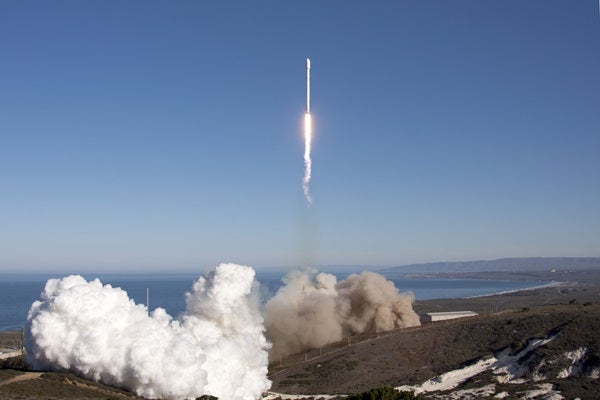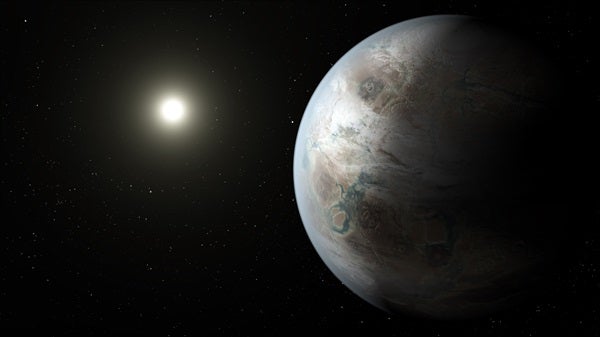Such super-Earths may have a stronger gravitational pull (which is good for holding on to an atmosphere, for example). A large, rocky planet with liquid water and an atmosphere may also have a large amount of surface area for life to develop, a dense atmosphere that may provide protection against radiation, and other benefits. Super-Earths may have downsides as well. A recent publication from a researcher in Germany makes an interesting point about a potential drawback to life on such a world: the difficulty in achieving spaceflight.
Hippke makes several other points about the difficulties involved in spaceflight from such a super-Earth, including a lack of elevated points from which to launch (which would provide some savings in fuel and thus mass) and the engineering difficulties that spaceflight would entail from a world potentially covered with water, but his main point about the mass and fuel requirements to reach space from a large, rocky planet are both interesting and provocative. Clearly, Kepler-20b represents an extreme example given its very large mass compared to Earth, and one could imagine that intermediate planets between the size of Earth and Kepler-20b would have proportionate engineering challenges. It’s also worth noting that Kepler-20b also orbits its parent star every 3.7 days at a distance of only about 0.05 astronomical units (1 astronomical unit is the average Earth-Sun distance), but very little is known about its true composition and while it may indeed be a rocky planet, this is largely speculation. (For comparison, Earth’s mean density is 5.5 grams per cubic centimeter; the mean density of Kepler-20b is slightly higher, at 8.2 grams per cubic centimeter.)
Arguments against Hippke’s hypothesis can be made as well. Humans have been almost exclusively dependent on chemical rockets, which have specific impulses (a measure of a rocket’s fuel efficiency, equal to the rocket’s change in momentum per unit of propellant) in the 200- to 400-second range. For example, the Space Shuttle main engine had a specific impulse of about 450 s. Different approaches (nuclear propulsion, space elevators, or other unknown technologies) may be more efficient and would allow the limitations set by a large rocky world to be overcome. It should be stressed that these technologies, while appealing, come with their own host of engineering and technical obstacles.
A related recent paper by Abraham Loeb of Harvard points out the difficulties in reaching escape velocity from planets orbiting red dwarf stars, the most common type of star known in the universe. Loeb points out that the escape velocity from a planet orbiting such star is quite high due to the close-in habitable zone of these stars, and may be extremely difficult, if not impossible, to reach with chemical rockets. Taken together, the work of Hippke and Loeb suggests that conditions on Earth may be unusually favorable with regard to meeting requirements to achieve spaceflight.
Hippke uses relatively simple (high-school level) math throughout the paper to make his points, centering on fundamental concepts and equations. While the paper itself is extremely brief (only 2 pages) he manages to raise several intensely interesting questions that will likely be debated for some time to come. Of note, the difficulties in achieving spaceflight from exoplanets may represent a potential answer to the Fermi Paradox — maybe we see no evidence of alien life is because spaceflight from the planets that harbor life is not feasible. Furthermore, if we were ever to travel to a super-Earth, we may not be able to visit the surface given the risk of becoming trapped there based on the fuel requirements to leave.
Surely, there are many unknown variables regarding conditions on exoplanets in general and super-Earths specifically, but conditions on such worlds favorable to the formation of life may serve as limitations to that life ever leaving those worlds.

Would you like to learn more about exoplanets and other solar systems? Check out our free downloadable eBook: Our search for extrasolar planets.











